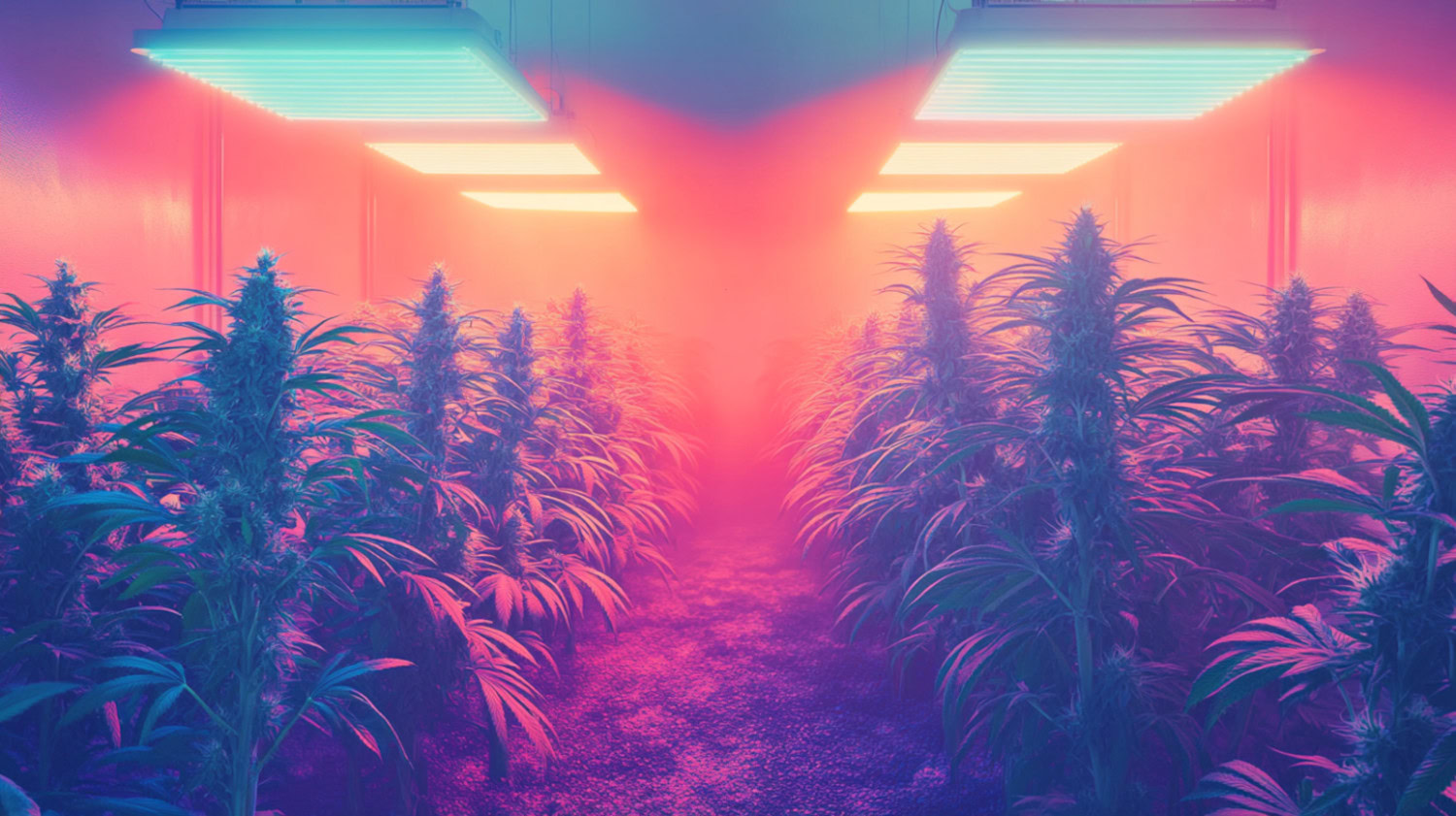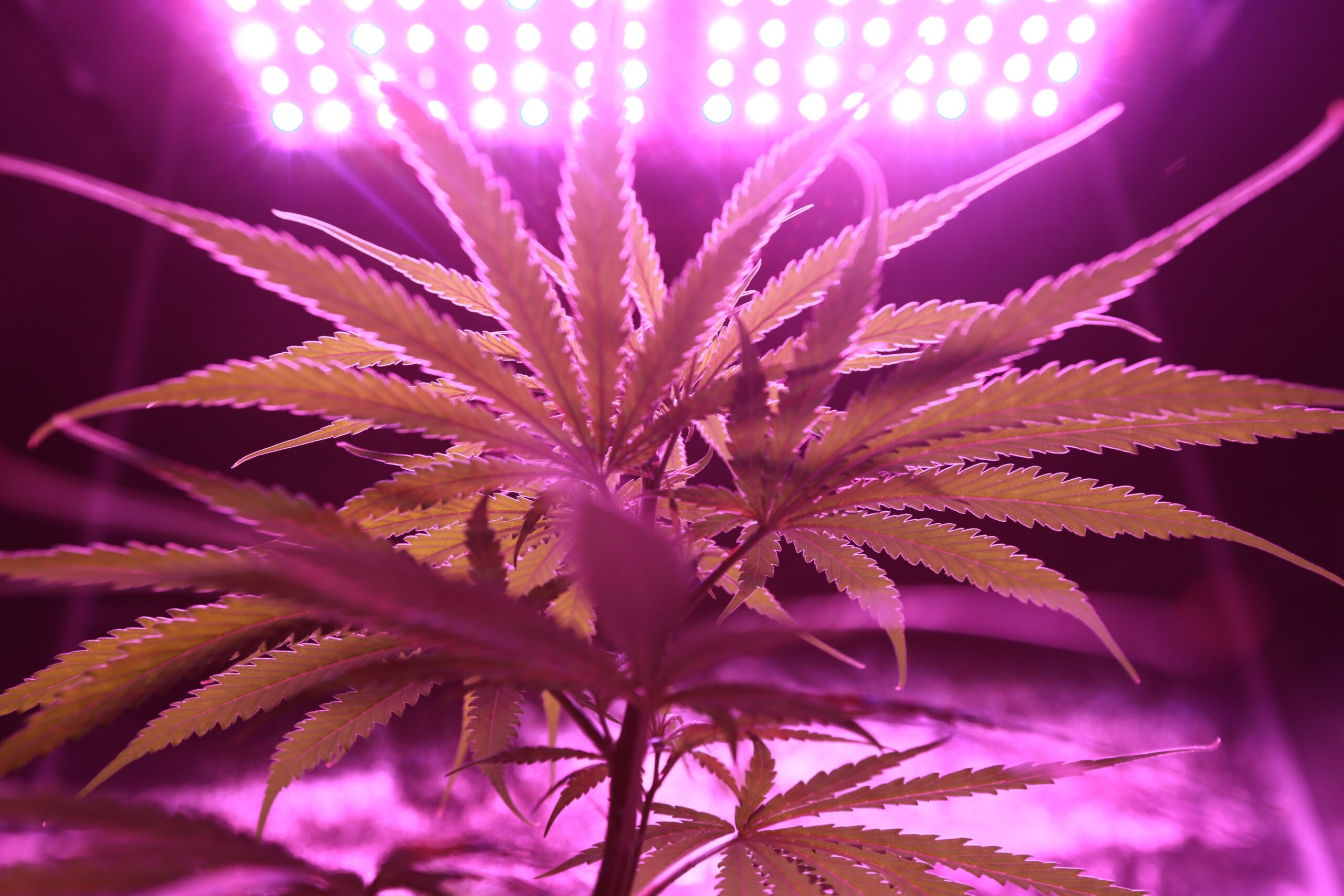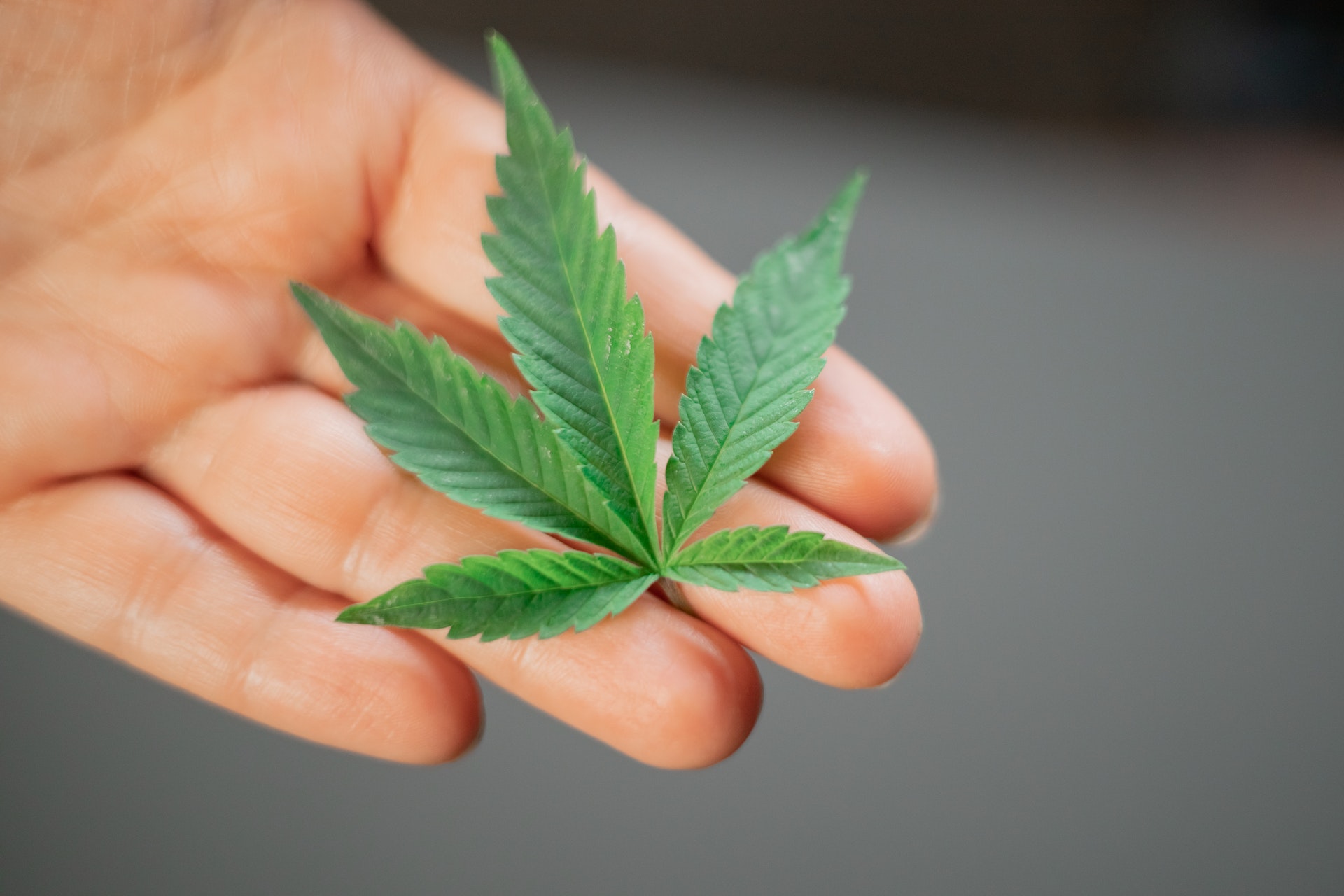In This Article
- The 3 Types of Grow Lights for Weed
- Traditional Compact Fluorescent Lights (CFLs)
- High-Intensity Discharge (HID)
- Light-Emitting Diodes (LEDs)
- Lighting Factors that Affect Growth
- Light Spectrum
- Photosynthetically Active Radiation (PAR)
- Light Intensity
- Photoperiod
- The Top 5 Grow Lights for Weed
- 1. Spider Farmer SF-4000
- 2. ViparSpectra XS1500
- 3. HLG Tomahawk 650
- 4. AC Infinity IONGRID T24
- 5. Mammoth Nova 6-Bar
- Crucial Grow Light Tips for a Better Yield
- Use the Right Spectrum at the Right Time
- Keep Lights Clean
- Stay Consistent with Timing
- Manage Light Heat
- Watch Your Plants
- References
Key Takeaways
- CFLs work well for beginners, HIDs deliver powerful light, and LEDs provide the most complete light spectrum.
- Light spectrum, intensity, and schedules must change as plants grow from veg to flower.
- For consistent harvests, focus on light placement, regular maintenance, and adjusting quickly when plants show signs of stress.
Light is everything in cannabis growing. Weak lighting leads to flimsy stems, sparse buds, and disappointing harvests, even with perfect soil and nutrients. Modern grow lights solve this problem, with options for closets, tents, and entire rooms.
The 3 Types of Grow Lights for Weed
Traditional Compact Fluorescent Lights (CFLs)
- Best for: Small grows, seedlings, and clones.
- Pros: Affordable, low heat, energy-efficient.
- Cons: Weak light penetration, less efficient for flowering.
CFLs are a decent entry-level option thanks to their affordability, especially for growers starting with a micro-growing setup. However, they lack the intensity for robust flowering, making them better suited for early grow stages.
High-Intensity Discharge (HID)
- Includes: Metal halide (MH) for vegging and high-pressure sodium (HPS) for flowering.
- Best for: Medium to large grows.
- Pros: High light intensity, considered one of the most effective for growing cannabis.
- Cons: Runs hot, high energy consumption.
HID lights, particularly HPS bulbs, have long been the gold standard for flowering cannabis due to their strong light output. However, they require proper ventilation and ballasts. They’re also less energy-efficient than LEDs.
Light-Emitting Diodes (LEDs)
- Best for: All growth stages, energy-conscious growers.
- Pros: Full-spectrum options, energy-efficient, low heat.
- Cons: Higher upfront cost.
LED cannabis grow lights dominate the market today thanks to their efficiency, customizable spectrums, and longevity. High-quality LEDs can mimic natural sunlight, promoting better cannabinoid and terpene production.
Lighting Factors that Affect Growth

Light Spectrum
The light spectrum refers to the colors of light your grow lights produce. Each color affects plant growth differently. Natural sunlight includes all the colors plants need, but indoor lights vary widely.
- Blue Light (400-500 nm) promotes bushy and strong vegetative growth.
- Red Light (600-700 nm) triggers flowers and resin production.
- 1:1 blue-red ratio usually produces higher yields, while full-spectrum LEDs provide a balanced range, ideal for all growth stages.1
Red-dominant HPS lights tend to deliver heavier harvests, while balanced LED spectrums boost cannabinoid levels in flowers.2 Others prefer red-light LEDs to turn plants into powerhouses, allowing them to grow faster and yield juicy buds.
Photosynthetically Active Radiation (PAR)
PAR refers to the wavelengths (400–700 nm) of light that cannabis plants actually use for growth.
A PAR meter measures the amount of usable light your plants receive (also called PPFD). Using one helps ensure optimal light intensity at each growth stage.
Light Intensity
Light intensity, usually measured as photosynthetic photon flux density (PPFD), directly impacts your cannabis yield and quality. Generally, more intense light produces healthier plants and larger harvests.
Cannabis-specific grow lights usually provide enough intensity, but the distance from your plants matters. Lights placed too far will lead to stretching and weak buds, while too close can cause light burn.
Photoperiod
Photoperiod refers to how long your plants are exposed to light each day. Adjusting photoperiod length directly controls when cannabis plants transition from vegetative growth to flowering.
- Shorter photoperiods (approximately 12 hours of light and 12 hours of darkness) typically induce flowering.3
- Longer photoperiods (18 to 24 hours of daily light and limited darkness) keep plants in the vegetative stage, delaying flowering.
Indoors, managing photoperiods is easy. Just turn your lights on and off at consistent times. Using a timer makes this process even simpler.
The Top 5 Grow Lights for Weed
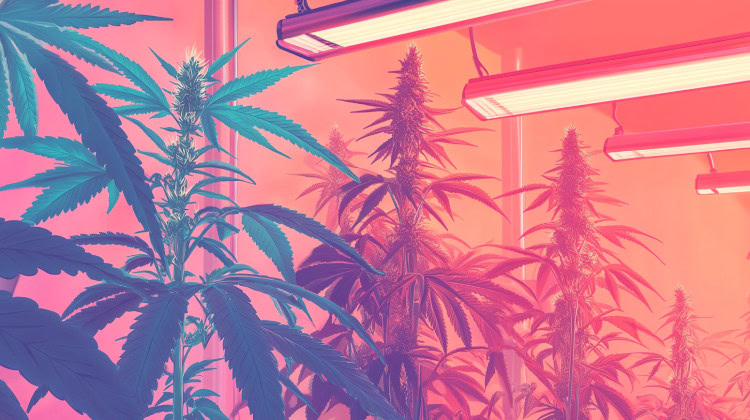
1. Spider Farmer SF-4000
- Type: EVO LED
- Coverage: 4-by-4-foot flowering footprint, 5-by-5-foot vegetative footprint.
- Why?
- Speeds up flowering with optimized red/IR spectrum
- Link multiple lights together seamlessly
- Industry-leading protection with a 5-year warranty
2. ViparSpectra XS1500
- Type: LED
- Coverage: 2-by-2-foot flowering footprint, 3-by-3-foot vegetative footprint
- Why?
- Optical lenses for a more uniform light spread
- Daisy-chain up to 20 lights with unified dimming control
- Fanless design with aluminum cooling
3. HLG Tomahawk 650
- Type: LED
- Coverage: 5-by-5-foot flowering footprint (at 30”), 7-by-7-foot vegetative footprint (at 48”)
- Why?
- Grows like a commercial light at home-grower prices
- Adjustable brightness for all stages
- Works with 120V/240V/277V without manual switching
4. AC Infinity IONGRID T24
- Type: Full Spectrum LED
- Coverage: 2-by-4-foot flowering and vegetative footprints
- Why?
- Smart controller included for automated dimming/scheduling
- Halo design eliminates hot spots for even canopy coverage
- Silent passive cooling with no moving parts
5. Mammoth Nova 6-Bar
- Type: LED
- Coverage: 5-by-5-foot flowering footprint, 6-by-6-foot vegetative footprint
- Why?
- Smart dual dimmers let you dial in veg or bloom intensity instantly
- Commercial-grade build survives years of heavy harvests
- 6-bar design delivers even coverage corner-to-corner
Crucial Grow Light Tips for a Better Yield
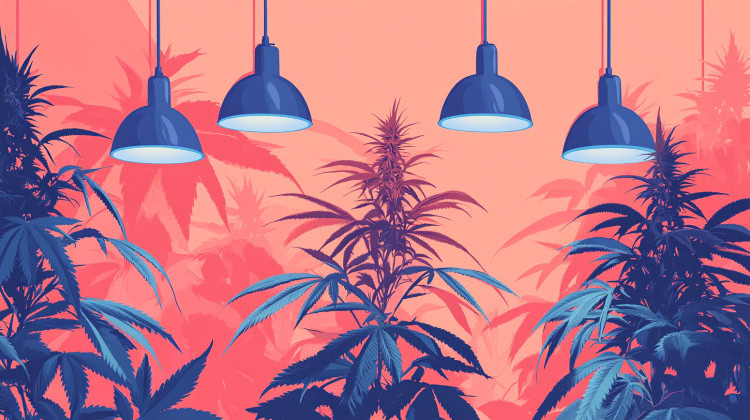
Use the Right Spectrum at the Right Time
Light needs change as cannabis grows. Blue light helps plants stay short and sturdy during veg, while red light boosts flower production. Switching to the right spectrum at the right stage helps plants focus their energy where it matters most.
Keep Lights Clean
Dust and grime cut down on light output. A quick wipe every week or two keeps your lights shining at full strength and makes sure plants get what they need.
Stay Consistent with Timing
Photoperiod plants need strict light schedules: 18 to 24 hours on for growth, depending on the strain and other conditions, and 12 hours to trigger flowering. This indoor light deprivation mimics outdoor growing techniques, letting you control when plants flower.
Autoflowers are more flexible but may do well with 20 hours of daily light, though it depends on the cultivar. A simple timer eliminates guesswork and prevents stunted growth from light leaks.
Manage Light Heat
Grow lights create heat, especially HIDs. If leaves curl upward or feel dry and brittle, heat stress may be the cause. Raise the lights slightly or improve airflow in the grow space. A small oscillating fan makes a big difference.
Watch Your Plants
While PAR meters can help, your plants will tell you what they need. Stretching means they want more light. Bleaching means they're getting too much. Adjust gradually and observe how they respond.
References
- Danziger N, Bernstein N. Light matters: Effect of light spectra on cannabinoid profile and plant development of medical cannabis (Cannabis sativa L.). Industrial Crops and Products. 2021;164:113351. doi:https://doi.org/10.1016/j.indcrop.2021.113351 ↩︎
- Magagnini G, Grassi G, Kotiranta S. The Effect of Light Spectrum on the Morphology and Cannabinoid Content of Cannabis sativa L. Medical Cannabis and Cannabinoids. 2018;1(1):19-27. doi:https://doi.org/10.1159/000489030 ↩︎
- Ahsan SM, Md. Injamum-Ul-Hoque, Shifa Shaffique, et al. Illuminating Cannabis sativa L.: The Power of Light in Enhancing C. sativa Growth and Secondary Metabolite Production. Plants. 2024;13(19):2774-2774. doi:https://doi.org/10.3390/plants13192774 ↩︎
The information in this article and any included images or charts are for educational purposes only. This information is neither a substitute for, nor does it replace, professional legal advice or medical advice, diagnosis, or treatment. If you have any concerns or questions about laws, regulations, or your health, you should always consult with an attorney, physician or other licensed professional.

